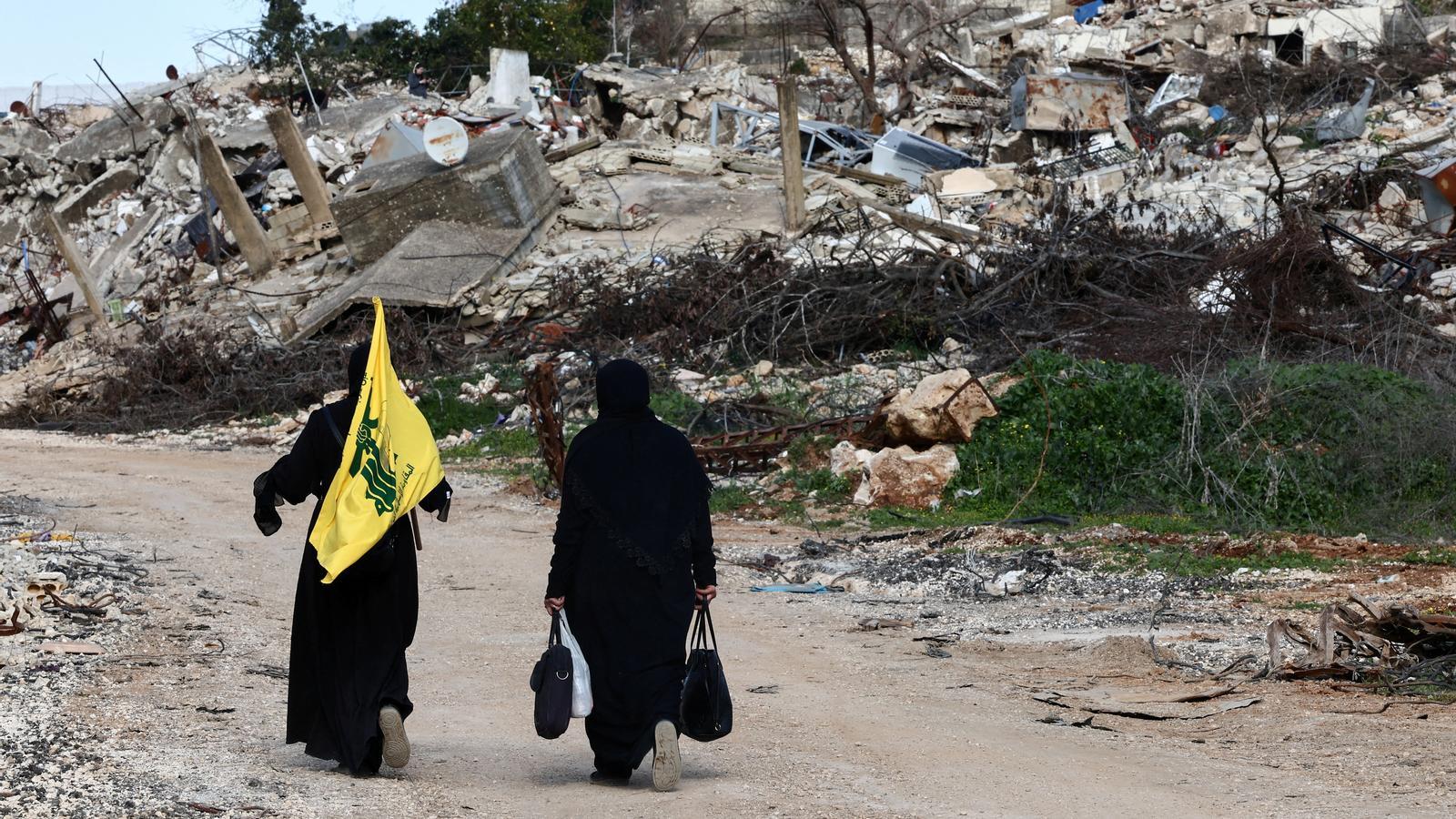The clock is ticking for Hezbollah's disarmament
The United States gives Lebanon 90 days to take concrete steps toward demilitarizing the Shiite militia.


BeirutSince Donald Trump returned to the US presidency, his administration has increased pressure on Lebanon with a roadmap aimed directly at the demilitarization of Hezbollah, the Shiite militia allied with Iran. The country is facing a turning point. Either it takes control of its sovereignty or it will be at the mercy of outside decisions. Washington's warning is clear. If there is no internal progress, Israel could decide to resolve the problem on its own.
Despite the heavy losses suffered during the 2024 war, Hezbollah maintains a significant arsenal that continues to pose a regional threat. According to Reuters estimates last September, the group had around 150,000 rockets, including long-range and precision missiles, many stored in underground tunnels to prevent their destruction. Although a substantial portion of this arsenal has been neutralized, Hezbollah retains several thousand operational precision missiles. Added to this is its unmanned aerial capability: Unit 127—in charge of the Ziad-107, Shahad, and Mohajer kamikaze drones—remains operational. Some reports point to a production capacity of thousands of drones, even after the November 2024 ceasefire.
US special envoy Tom Barrack's visit to Beirut last week didn't last long, but the effects have shaken up the Lebanese political landscape. Behind his diplomatic smile, the US envoy brought more than good intentions: an ultimatum. The United States has already responded to the document delivered to them by the Lebanese government on the disarmament of Hezbollah. It was neither an outright acceptance nor a rejection. Through its embassy in Beirut, Washington returned a series of "ideas," in what has been described as an ongoing exchange. But the message is clear. The White House wants the weapons file closed by the end of the year.
The Lebanese proposal does not convince Washington. According to diplomatic sources, the text only mentions the area south of the Litani River, omits any specific timeline, and does not address the issue of weapons in the north of the country, the border with Syria, or the armed Palestinian groups. It avoids the core of the problem. While they recognize that the Beirut plan can serve as a starting point, they warn that the process cannot be prolonged indefinitely. The margin given is 90 days. After that deadline, according to a senior US official, it will be too late. Time is ticking. And it is not a symbolic countdown.
After more of a year of war with Israel, the great powers are not willing to maintain thestatus quo.The disarmament issue has returned to the center of political debate, both in Lebanon and abroad. The US is not limited to demanding a withdrawal of weapons from the southern Litani: it also demands effective control in the north, increased surveillance on the border with Syria, and a clear response to the proliferation of weapons in non-state hands.
Separating politicians from guerrillas
Despite the firm tone, the approach is not purely coercive. In a strategic shift, Washington has begun to distinguish between Hezbollah's armed wing—considered a terrorist organization—and its political side. The door is open for the Shia party to retain institutional clout, provided it abandons armed activity and submits to state rule. The formula is not new. Turkey, for example, explored a similar scheme for years with the PKK, offering institutional reintegration in exchange for the gradual abandonment of armed struggle. Although the process failed at the time due to a lack of mutual guarantees and political will, today the PKK has begun a partial disarmament. This precedent serves.
In the Lebanese case, the United States insists that any process must be initiated by the government, with the consent of the cabinet and Hezbollah as a political force that integrates itThe logic is not to destroy, but to reabsorb the movement within the state framework. Diplomatic sources emphasize that this path has the support of France and regional allies such as the Gulf countries. The recent stopover by the US envoy in Paris before landing in Beirut served to align positions and increase pressure on the Lebanese authorities.
Parliamentary Speaker Nabih Berri, a veteran of Lebanese politics and a long-standing ally of Hezbollah, understands that this may be the last moment for negotiations. In November, he already achieved a last-minute ceasefire. Today, he could try to repeat the move and save some interests of the Shia community before the train derails. But the margin is narrow. If the Lebanese state doesn't take the initiative, Israel could decide to resolve the problem in its own way. Barrack didn't say so openly, but hinted that, as in the case of Iran in 2018, if dialogue fails, military action is not ruled out.
Hezbollah, for its part, insists that any discussion must take place within the Lebanese institutional framework. It believes there is no need for a new agreement beyond the current one. which arrived in November 2024But for the United States, it's no longer useful. The situation has changed. And so have the demands.
Negotiations are still ongoing, but patience is running out. If concrete steps aren't taken, if the Lebanese state doesn't assume clear leadership, the scenario could become even more dangerous with greater internal fragmentation. No one rules out the threat of civil conflict. Hezbollah's disarmament is the condition that will determine the country's future. And the clock is ticking.
